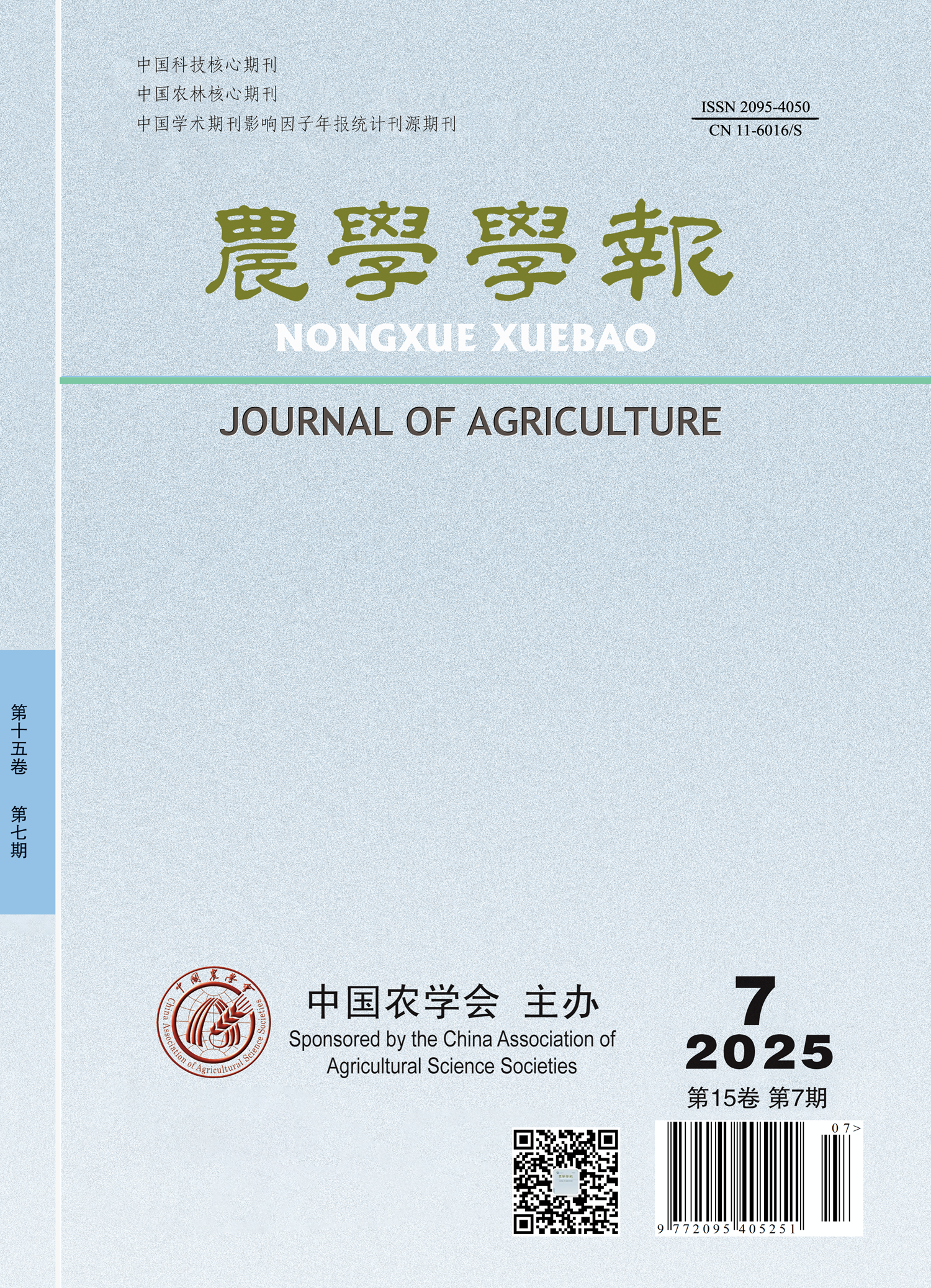TIANJingmei, LIUJia, YANGXiaoyun, LIShaoxiang, ZHANGCuiping, ZHANGLin, LIUKun, ZHURunyun, DINGMingliang
The study aims to investigate the impact of planting density on the yield and quality of the newly approved high-quality weak gluten wheat variety 'Yunmai 114' in Yunnan, providing a theoretical basis for determining a reasonable planting density for the large-scale promotion of weak gluten wheat varieties in Yunnan. Using 'Yunmai 114' as the experimental material, seven treatments including 900000 plants/hm2 (A), 1.35 million plants/hm2 (B), 1.8 million plants/hm2 (C), 2.25 million plants/hm2 (D), 2.7 million plants/hm2 (E), 3.15 million plants/hm2 (F), and 3.6 million plants/hm2 (G) were set up for basic seedlings, with three replicates and incomplete random block arrangement. The yield and yield related traits, grain type traits, quality traits and stem tiller dynamics of the variety were investigated under different planting densities, and variance analysis and correlation analysis were conducted on these traits. The highest number of tillers, effective panicles, and the number of tillers in the third, fourth, fifth, sixth, and seventh leaf stages of 'Yunmai 114' showed extremely distinct differences at 7 planting densities. There were also significant differences in spike rate, grain number, plant height, water absorption rate, protein content, stable time, formation time, and hardness value at each planting density. However, there were no significant differences in theoretical yield, actual yield, thousand grain weight, grain area, grain circumference, grain length to width ratio, and grain length and width among different planting densities. The changes in both theoretical and actual yields showed a trend of first increasing, then decreasing, then increasing, and finally decreasing with the increase of planting density. There was a highly significant positive correlation (r=0.778**, 0.908**, 0.767**, 0.924**, 0.850**, and 0.752**) between the effective panicle, the number of tillers in the third, fourth, fifth, sixth, and seventh leaf stages of the variety and its basic seedlings. The plant height and theoretical yield were significantly positively correlated with their basic seedlings (r=0.536* and 0.520*). There was a significant negative correlation between the number of grains per panicle, protein content and stability time with their basic seedlings (r=-0.450*, -0.449*, and -0.467*), while there was a certain correlation but not significant between actual yield and 16 other traits with the basic seedlings. Planting density could significantly affect the number of tillers in the third, fourth, fifth, sixth, and seventh leaf stages, highest tiller number, effective panicle, spike rate, grain number, plant height, water absorption rate, protein content, stability time, formation time, and hardness value of 'Yunmai 114', but it did not significantly affect the theoretical yield, actual yield, thousand grain weight, grain area, grain circumference, and grain length to width ratio, grain length and grain width. Moreover, a low planting density was not conducive to the performance of the yield and quality characteristics of the variety. When the basic seedlings were 1.35 million -3.6 million plants/hm2, the yield of the variety remained stable at 14389.50-16078.50 kg/hm2, maintaining good yield and stability, as well as maintaining the quality characteristics of weak gluten wheat. These planting densities are suitable for promotion in areas with better water and fertilizer conditions in Yunnan.
